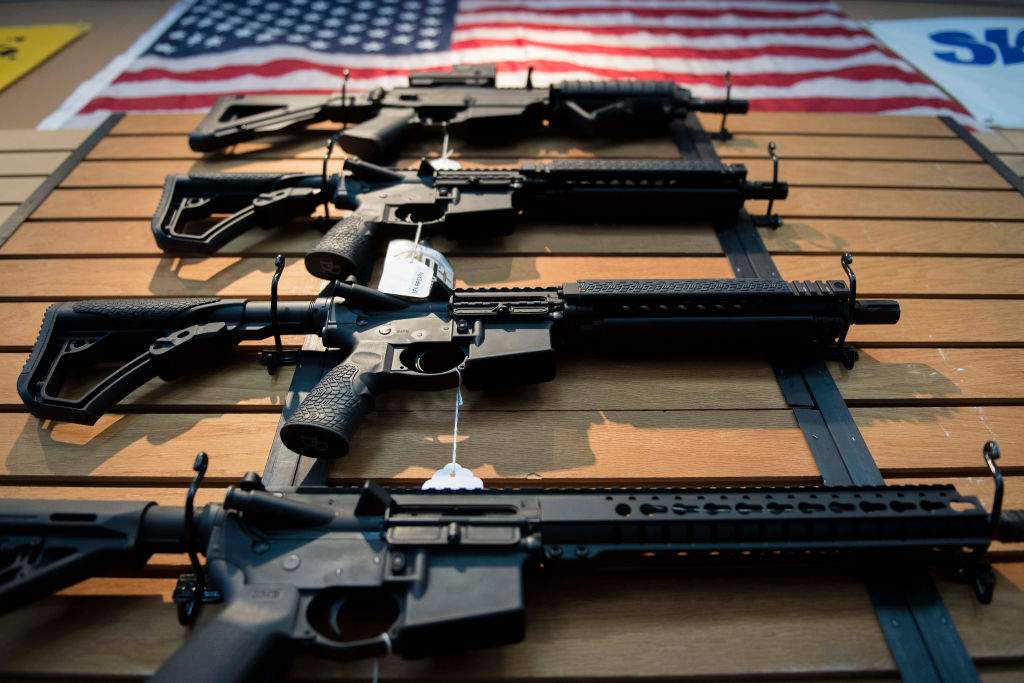
Children living in states with strict firearm laws are less likely to die from gun violence than those in states with more lax restrictions, according to a study in Pediatrics published Monday. The more rigorous the rules, the lower the risk, the researchers showed.
The U.S. has the highest rate of firearm-related deaths among children in high-income countries, as well as the highest rate of gun ownership and the loosest laws. The findings are part of a new wave of research into the impact of firearms on public health.
The National Rifle Association stirred the debate in November, telling doctors to “stay in their lane” after the publication of papers on reducing firearm injuries and deaths in the U.S.
The new results bolster the argument that gun restrictions may help avert some of the 4,250 deaths that occur each year among Americans under age 21, already the second leading cause of death in children after traffic accidents. States with stricter gun control laws had 4% fewer pediatric deaths, and those with universal background checks for firearm purchases in place for at least five years had a 35% lower risk, the study found.
“As a pediatric emergency medicine physician, I have personally cared for too many children who have been unfortunate victims of gun violence,” said lead author Monika Goyal, director of research in emergency medicine at Children’s National in Washington. “Although there has been a recent uptick in firearm-injury prevention research, our country has not embraced this issue as it has other public health crises. An evidence-based and data-driven approach is the only way to combat this public health epidemic.”
The researchers analyzed data on deaths caused by firearms between 2011 and 2015 collected as part of the U.S. Centers for Disease Control and Prevention’s Injury Statistics Query and Reporting System, which tracks all fatal injuries in the U.S. They cross-referenced their findings with gun law scorecards from the Brady Campaign to Prevent Gun Violence, which measures state firearms regulations.
In all, there were 21,241 deaths among children and young adults under the age of 21 during the five-year period. The majority of the deaths, 62%, were assaults, followed by suicides. Most occurred among males, and two-thirds were aged 18 to 21 years old.
States with “universal background checks for firearm purchase had lower firearm-related mortality rates in children.”
Each state in the nation is allowed to implement its own regulations around buying and carrying guns. The Brady Campaign reviews them every year, gathering an expert panel to assess each state based on 33 gun policies and rate them on a 100 point scale. The higher the score, the stricter the firearm legislation.
In the new study, every 10 point increase in a state’s gun law score correlated with an 8% drop in firearm-related deaths. The protective effects remained even after the researchers took into account other variables, like gun ownership, education levels, race and income levels, registering a 4% drop in firearm-related deaths.
“These data suggest that strict firearm legislation may be protective of children even in areas of high gun ownership,” the researchers wrote.
Previous studies found overall deaths from firearms fell after states implemented stricter laws, including background checks for buying guns or ammunition and identification measures like microstamping weapons. Goyal and her team decided to see if the protective benefits trickled down to children, as measured by lower pediatric death rates in the strictest states.
The researchers weren’t able to show that implementing stricter gun laws would directly lead to fewer pediatric gun-related deaths since they didn’t compare states before and after new regulations were put in place. What they did find was that those states that already had strict laws—jurisdictions that might differ in other significant ways from states with lax gun laws—had fewer deaths.
Stricter gun laws are already known to lower overall death rates in adults, as states with more laws have fewer homicides and suicides than those with fewer, the researchers said. A range of laws, including waiting periods to get firearms, universal background checks, restrictions on carrying guns in public and mandated gun locks have all been linked to lower suicide rates.
Although a variety of laws have been passed in an effort to reduce gun-related deaths, differences in implementation make it hard to know which are most effective, according to the report. For children, the approach with the most impact was universal background checks for gun purchases, the researchers found.
“Firearm-related injuries are the second-leading cause of pediatric death in the U.S., yet there is significant variation in firearm legislation at the state level,” Goyal said. “In our study, we found that states with stricter firearm legislation, specifically legislation requiring universal background checks for firearm purchase, had lower firearm-related mortality rates in children.”
More Must-Reads from TIME
- Cybersecurity Experts Are Sounding the Alarm on DOGE
- Meet the 2025 Women of the Year
- The Harsh Truth About Disability Inclusion
- Why Do More Young Adults Have Cancer?
- Colman Domingo Leads With Radical Love
- How to Get Better at Doing Things Alone
- Michelle Zauner Stares Down the Darkness
Contact us at letters@time.com